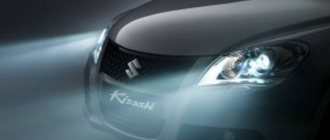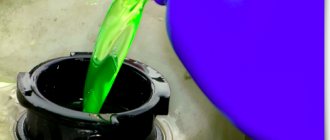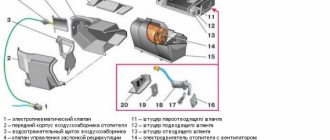Revocation of a driver's license for installing LED lamps
In addition to a fine for installing LED lamps, the violator risks being left without a driver's license. Despite the persistence of traffic police officers, it is difficult to prove the fact of a violation.
For what reason are they deprived of rights?
Article 12.5 of the Code of Administrative Offenses of the Russian Federation discusses the reasons for imposing punishment on drivers operating cars with LED lamps. Paragraph 3 states that law enforcement officers deprive the rights of drivers of cars with:
- lighting devices located in front are red;
- red reflective installations;
- lighting devices in color and mode of operation that do not comply with the provisions for safe operation of the vehicle.
If the violation is not established for the first time, the driver will lose his license for a period of six months to a year.
If you study the third point thoroughly, then deprivation of a driver’s license is possible only if the headlights are violated. Inconsistency between the markings of headlights and lamps is not such.
What does a car owner need to know before replacing?
Regular LED lamp
Before you decide to select and turn on powerful and super-bright 12V LED car lamps instead of conventional ones, you need to familiarize yourself with the basic data. First of all, understand that an LED is not a lamp. Any incorrect actions during the replacement process can cause serious problems, and this applies not only to diode dumps, but also to any actions with wiring in general. In general, there is nothing complicated in this process, but still some points should be taken into account.
If you decide to connect powerful and super-bright car LED bulbs, then consider a few nuances:
- To make the connection correctly, take into account the voltage of the on-board network. In a car, this figure is usually 12-13 volts if the engine is turned off and about 13-14.5 volts if the engine is running.
- A powerful and super bright flashing LED usually requires about 3.5 volts of voltage, but a lot depends on the color. For example, yellow and red diode lamps consume about 2-2.5 volts, while white, blue and green ones consume around 3-3.8 volts. If the LED light bulb for a car headlight is powerful, then the typical current will be 350 mA, and if it is weak, then about 20 mA.
- As practice shows, not all car LEDs, unlike traditional lamps, allow you to properly illuminate the space around. This point must be taken into account if you decide to replace the diode lamps in the instrument panel. In addition, before purchasing, it is necessary to evaluate the type of lens in the lamp; it may make sense to consult with the seller. For example, narrow-beam diode lamps have a small lens; this should be checked in advance. A better option would be to buy several types so that you can understand which one is more suitable for you and which one you need.
- Any 12 volt diode element has both a plus and a minus. The plus is the anode, and the minus is the cathode (video author - TVTachki).
Remember that you cannot simply remove the car lamp from the headlight and turn on the flashing diode into the car's on-board power supply. So you will only burn it, but there will be no result. Also keep in mind that automotive diode elements for headlights and other purposes are divided by size, power, and number of crystals located inside. In addition, they have different brightness and color. In any case, the body of the diode component will contain a semiconductor crystal that emits light when voltage passes through it.
How are LEDs for car headlights divided by power:
- Low-power diode automotive elements. They do not have cooling, so they are less durable. In addition, their use in cars is impractical; they are mainly used in radio equipment.
- Power diode components are quite durable; if you use them correctly, they can last about ten years. It should also be noted that such flashing diodes for car headlights are almost not subject to loads.
- Automotive diode modules are an aluminum plate on which a number of LEDs are located. If the plate is of high quality, then its cost will be quite high. As for ordinary Chinese strips, they themselves are not powerful, so their use is relevant for illuminating the glove box or dashboard. In addition, they have a reduced service life.
Considering all these factors, you can decide which 12 volt diode you need. After this, you can start connecting yourself. Of course, if you are doing this for the first time, it is advisable to use a diagram.
Module connection diagram for brake lights and dimensions
Connecting LEDs
How to properly connect a 12 volt light bulb in a car with your own hands? It doesn’t matter whether it’s flashing or not, in the headlight or instrument panel, we’ll talk about this later.
Let's look at an example of connecting with your own hands on a module, taking into account several nuances (you will find diagrams below):
- Sockets, that is, clusters, are designed for 12 volt power supply; such devices can be easily connected to the car wiring and enjoy flashing or simply bright lights. However, such devices have a certain drawback - when the engine speed changes, the brightness will also either decrease or increase. It may not be critical, but it will still be noticeable to the eye. But you also need to take into account that such clusters shine well when the voltage in the network is 12.5 volts, that is, if your car has low voltage, then the light bulbs will shine weakly.
- By its design, the cluster itself consists of the diodes themselves, as well as a resistor. Resistors are an important element of any cluster. For every three light bulbs, one resistor is installed to dampen excess voltage. If you are purchasing headlight tape, you may have to trim it. When installing in headlights, you need to take into account that the tape must be cut in certain places.
- Connection of 12 volt LEDs with resistors to car headlights is carried out in series. You need to make a cluster, that is, connect the required number of light bulbs to each other in turn, and the two outputs that will be located at the edges to the car network. In this case, we are talking about white diodes, the power of which is 3.5 W. That is, for a network with a voltage of 12-14 volts, you will need three light bulbs, which in general will consume not 12, but 10.5 volts. Since diodes have a plus and a minus, the series connection is carried out in such a way that the plus of one element is connected to the minus of the other (video author - Roman Shcherban).
While the cluster cannot be connected directly with your own hands, a resistor must also be connected in series, that is, resistance. The resistance value should be 100-150 Ohms, and the resistor power should be 0.5 W. As for the resistor, finding it is not a problem.
Parallel connection
With the parallel DIY connection method, you will need to connect several circuits, each of which will consist of three light bulbs and one resistance resistor. In this case, the plus is connected only to the plus, respectively, the minus - only to the minus. If one car diode is connected, then you will need a resistor with a resistance of 550 Ohms, for two - a resistance of 300 Ohms, etc. If the information is not clear to you, then study Ohm's law.
To assemble the circuit yourself, you only need a multimeter.
Consider an example with a 3.5 V diode and a current of 20 mA:
- First, using the device, you should measure the voltage indicator where you plan to install the lamp. Please note that this figure may vary depending on location. For example, by measuring the voltage, you get 13 V.
- Next, from the resulting indicator (in our case 13 volts), you need to subtract 3.5 volts of the LED light bulb, as a result you get 9.5 V. There is Ohm’s formula, according to which all relevant measurements are made. It states that the current is measured in amperes, that is, 20 mA is equal to 0.02 A.
- Similarly, using the formula, you should understand what the resistance should be. That is, the resulting figure of 9.5V is divided by 0.02 A. As a result, we get 475 Ohms.
- To prevent possible overheating of the resistor, it is necessary to understand in advance what the power should be. To do this, the voltage should be multiplied by the current, that is, 9.5 * 0.02. The power indicator will be 0.19 W. But in order for everything to work without interruption, you should use a small reserve, let the power be 0.5-1 W.
- Then the multimeter must be switched to current measurement mode. Your task is to measure the current in the network break between the light bulb and the resistor. Set the device to 10A in advance, then the plus of the battery is connected to the plus of the multimeter, and its minus is connected to the plus of the light bulb.
- As a result, the reading on the device screen should be about 20 mA. Since there may be variations in readings across devices (diodes and resistors), the reading will vary. Please note that the more current that flows into the light bulb, the more powerful it will work. Of course, too high brightness affects the lamp’s service life, so the best option would be to choose a current of 18 mA.
Connection diagram of a light bulb and a resistor to the device
Application of penalties for operating a car with LED lighting
The legislation of the Russian Federation considers several options for violations regarding the use of LED lamps. Paragraph one of Article 12.5 of the Code of Administrative Offenses provides for punishment in the form of a fine for:
- operation of a faulty vehicle;
- use of a vehicle in violation of the operating permit provisions.
The installation of LED lamps also falls into these categories. The fine for installing them is 500 rubles. Often a primary offense will result in a warning.











